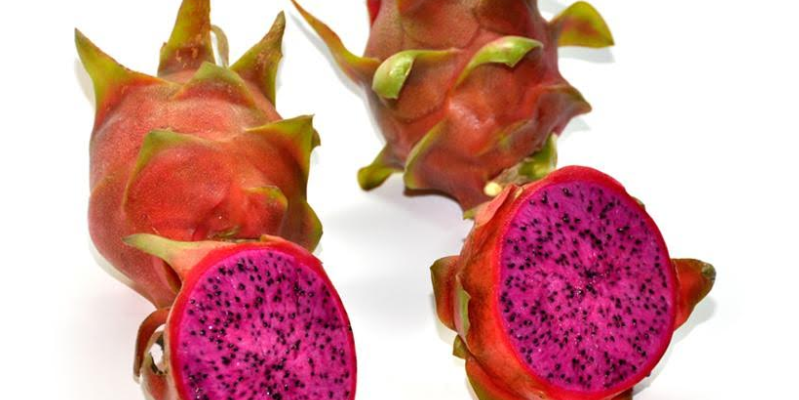It’s tasty. It’s healthful. It’s pretty. It’s easy to use in a variety of ways. Have you eaten pitaya fruit today?
By Tsivya Fox-Dobuler, United With Israel
The exotic pitaya fruit is taking the world by storm for its unique flavor and long list of health benefits.
Widely known as “dragon fruit,” which is cultivated in Mexico, Southeast Asia, warmer places in the United States, the Caribbean, Australia and other tropical and subtropical regions, Israeli innovation has made this fruit tastier, prettier and more widely available.
Yossi Zaphrir, CEO of Top Eden Fruits farm, located near the city of Rehovot in central Israel, told United With Israel, “It is important to distinguish between pitaya, which is delicious, and has a rich color and dragon fruit from Vietnam, which is almost flavorless.”
The exotic-looking pitaya fruit is slightly oval and about the size of an apple. It is recognizable by its soft, spiky and scaly outside and is part of the cacti family that bear fruit.
Its juicy texture is akin to a kiwi or pear, and its edible seeds provide a slightly nutty flavor.
As the plants can endure up to 104 degrees Fahrenheit (40 degrees Celsius) and require little water for growth, Israeli climate is perfect for their breeding.
Israel Perfects the Pitaya
Top Eden Fruits farm started to grow pitaya in 1990. Zaphrir, a UCLA Master of Science graduate, has succeeded in developing the summer variety of pitayas that flower earlier, produce more fruit, and are tastier than other versions grown around the world. These advances have helped to make pitaya more available year round.
Following years of research, in 2003, botanists and agronomists at Ben-Gurion University in the Negev managed to create a winter-variety of pitaya. They crossbred a Panamanian red pitaya and a Colombian yellow pitaya. This created the superior Israeli version of the fruit that has a deep reddish/purple color.
Through these combined efforts that included “selective breeding,” the Israeli grown pitaya is sweeter, more colorful and more durable than its counterparts grown in other countries.
Selective breeding, as opposed to “genetic engineering,” which involves changing an organism’s genome in a laboratory and is fraught with controversy, is a system that controls the reproductive process of plants in order to produce higher-quality offspring. It is a natural breeding process that weeds out lesser quality fruit for higher quality fruit.
In addition, pitaya does not need pesticides to protect it from destructive critters, making it a great choice for those who prefer to eat “organic.”
“So clean is the Israeli pitaya from both insects and pesticides, it is permitted to be imported to the United States, which has particularly strict import regulations,” explained Zaphrir. “And, our Bilu pitaya variety won first place in a taste competition in California about three years ago.”
Pitaya Packs in Nutrients
With a growing fan-base and availability, pitaya is now falling into a “superfruit” category for its long list of health benefits, uses, and taste.
Medical News Today, a leading UK healthcare publishing company, as well as many other respected medical journals, provides a long list of nutrients that pitayas provide.
These include, for example, prebiotics – a type of “fertilizer” for growing good bacteria in the gut, a high-quality fiber that can reduce certain cancers, cardiovascular disease and obesity, antioxidants that boost the immune system, remove toxins from the system, and stave off cell degeneration and cancer.
Though the fruit can be enjoyed on its own, it can also be added to smoothies, salads, desserts, blended and frozen into a sorbet, salsa and wherever else one’s exotic tastes takes them.
As pitaya becomes more available (it is often found near kiwis and pineapples in supermarkets,) including this delicious fruit in one’s diet is a smart and easy choice.
